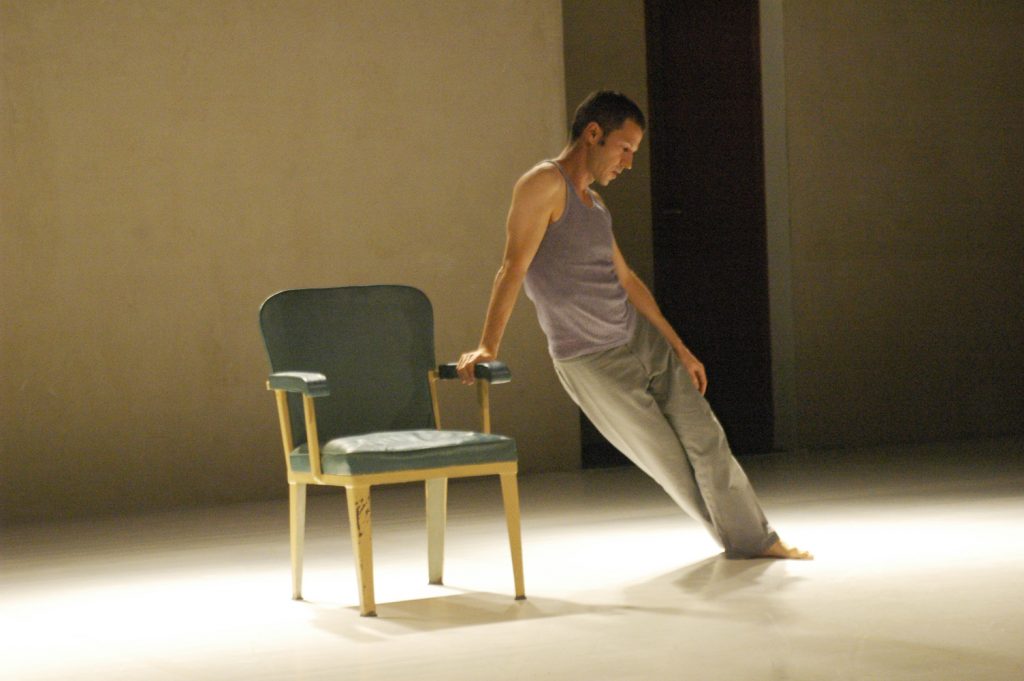Deux danses d’ameublement
“First of all, I have to say they look as busts of Silenus you see in almost every sculptors studio, usually represented with a flute or panflute in the hand, made out of two parts that can open and hold representations of the gods inside”.
Symposium Plato
“Socrates on the other hand, walking around, said that his legs started to become heavy, went to lay down on his back as the man had told him to do.”
Phaedo Plato
John Cage based his piano piece “Cheap Imitation” on Erik Satie’s “Drame Symphonique Socrate” that in turn was based on Plato’s texts about the life and dead of Socrates. Dunoyer seeks inspiration in the creation process of both these music pieces. The “Deux danses d’ameublement” connect “le geste” (the gesture), the moment and the body, with “la geste”, the narrative, the epic of postmodern icons. Dunoyer uses a chair and a table as props and refers to: 23 photos of Fumiyo Ikeda, a life archive of Anne Teresa De Keermaeker’s company Rosas and Primary Accumulation a solo by Trisha Brown dating from 1972. Dunoyer builds up a play with metamophoses that will transform the initial cheap imitation into an original creation.



Credits
Choreography & performance: Vincent Dunoyer
Music: Cheap Imitation Part 1 John Cage
Light: Ana
Thanks to: La Porta, L’animal a l’esquena.
